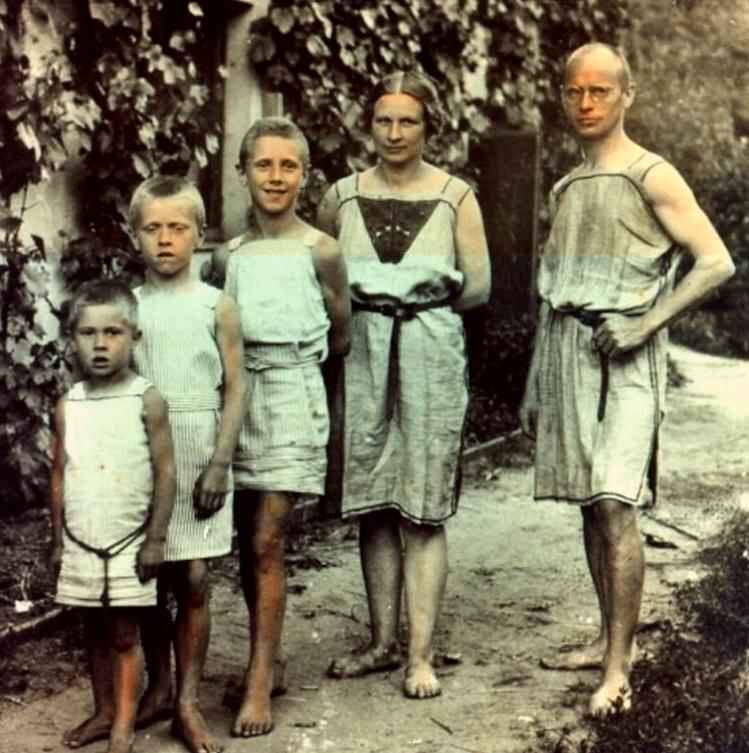
Proppe Family (Germany, about 1920)

Figure 1.-- The photo shows the family of Hans Proppe. He was born in 1875 in Cologne. He studied space art or interior decoration in Mainz and Berlin. From 1904 he taught in Trier at the School of Arts, where he knew also the architect Heinrich Tessenow. The photo was taken in summer 1919 or 1920. It shows Hans Proppe with his family in their backyard. They are wearing a clothing that looks vaguely like ancient Greek clothing.
|
|
German society as was generally the case throughout Europe was very formal in the 19th and early 20th century. Some by the 20th century had begun to question the formality and sharp class divisions. Other began to question the complexity of the modern live style. Such questions were particularly prevalent among the artistic community, but certainly not limited to it. Another result was cultural movementd like Lebensreform (life reform). This is a term used for various movement in Germany and Switzerland between the mid 19th and early-20th centuries. There were similar mocements in other countries as well. In Germany these movements continued to influence some communities after World War I. Lebensreform was very critical of industrialization, and had the motto "Zurück zur Natur" (Back to Nature). It influenced the health care, diet, and clothing. These movements often found inspiration in ancient cultures, especially the Greeks. They promoted the Freikörperkultur (free body culture, i.e. nudism) and comfortable clothing. An example here is the Proppe family about 1920. The photo shows the family of Hans Proppe. He was born in 1875 in Cologne. He studied space art or interior decoration in Mainz and Berlin. From 1904 he taught in Trier at the School of Arts, where he knew also the architect Heinrich Tessenow. The photo was taken in summer 1919 or 1920. It shows Hans Proppe with his family in their backyard. They are wearing a clothing that looks vaguely like ancient Greek clothing. The Greeks were generally preferred over the Romans as they were seen as more artistic and less ,ilitaristic. The ideal of " Back to Nature" is express also by the lack of any footwear. It was not that unusual for children to go barefoot, but it was for adults.
Sources
Neues Trierisches Jahrbuch 1996 (Trier. 1996).
HBC

Navigate the Boys' Historical Clothing Web Site:
[Return to the Main German 1920s family page]
[Return to the Main German manners and culture page]
[Return to the Main German page]
[Introduction]
[Activities]
[Biographies]
[Chronology]
[Clothing styles]
[Countries]
[Essays]
[Bibliographies]
[Contributions]
[FAQs]
[Glossary]
[Images]
[Links]
[Registration]
[Tools]
[Boys' Clothing Home]
Created: 10:03 PM 9/26/2009
Last updated: 10:03 PM 9/26/2009



